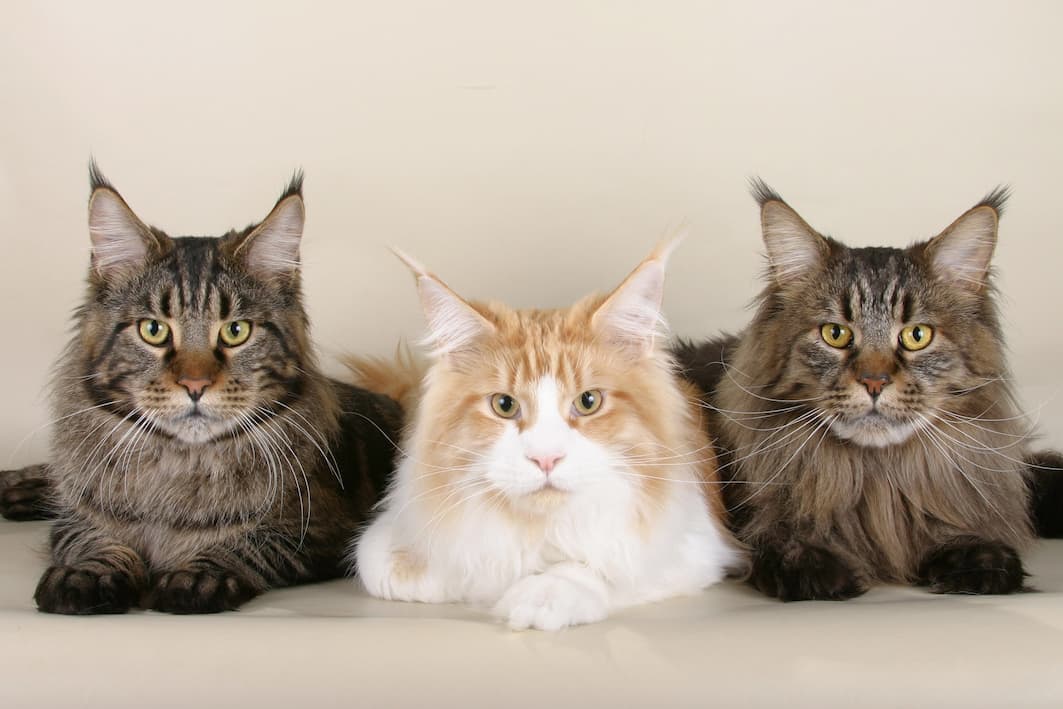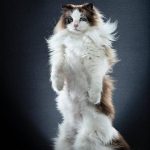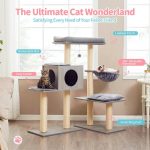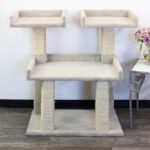What Does a Maine Coon Cat Sound Like? Discover the Fascinating Chirps and Trills!
Maine Coon cats are known to make chirping and trilling sounds, which are a cross between a meow and a purr. These unique sounds are typically heard when Maine Coons are communicating their physical and emotional needs, such as hunger, thirst, or the desire to play.
They generally do not meow unless they have learned it from another cat breed or have health issues. Maine Coon cats have a distinct meow that is bird-like, short, and high-pitched, often repeated several times in a row. Their vocal nature and unusual sounds set them apart from other cat breeds.

Credit: www.vetstreet.com
The Unique Sounds Of Maine Coon Cats
Maine Coon cats are a breed known for their unique vocalizations. When it comes to communicating, these cats have a wide range of sounds that they use to express themselves. From chirping to trilling, Maine Coon cats have a language all their own. Understanding the different sounds Maine Coon cats make can help you better understand their needs and emotions. In this article, we will explore the unique vocalizations of Maine Coon cats and what each sound means.
Maine Coon Cats: A Breed Known For Their Unique Vocalizations
Maine Coon cats are famous for their distinct vocalizations that set them apart from other cat breeds. While most cats communicate through meowing, Maine Coons have a wide range of sounds that they use to express themselves. These unique vocalizations are one of the many traits that make Maine Coon cats stand out.
Understanding The Different Sounds Maine Coon Cats Make
Maine Coon cats have a repertoire of sounds that they use to communicate various needs and emotions. Here are some of the different sounds you may hear from a Maine Coon cat:
- Chirping: Maine Coon cats are known for their bird-like chirping sounds. This short, high-pitched sound is often repeated several times in a row. Chirping is a common sound Maine Coons make when they are excited or trying to get your attention.
- Trilling: Trilling is another distinctive sound that Maine Coon cats make. It is a combination of a purr and a meow, resulting in a melodic tone. Maine Coons often trill when they are happy or content.
- Meowing: While Maine Coons are not typically known for meowing like other cat breeds, some may develop the skill if they are taught by other cats or have health problems. If your Maine Coon starts meowing, it might be worth investigating any potential underlying issues.
- Hissing: Like other cats, Maine Coons may hiss when they feel threatened or cornered. Hissing is a defensive sound and a clear indication that your cat is feeling scared or uncomfortable.
By understanding these different sounds, you can decipher what your Maine Coon cat is trying to communicate. Paying attention to their vocalizations can help you better meet their needs and ensure their well-being.
Chirping: The Fascinating Communication Method Of Maine Coon Cats
When it comes to communication, Maine Coon cats have an intriguing and unique way of expressing themselves – through chirping. This distinctive sound has fascinated cat lovers for years and has become synonymous with Maine Coon cats. In this article, we will unravel the mystery behind the chirping sound made by Maine Coon cats, exploring its meaning and providing examples of the different chirping sounds you may hear from these magnificent felines.
What Is Chirping And Why Do Maine Coon Cats Do It?
Chirping is a bird-like, short, and high-pitched sound that Maine Coon cats make. It is a unique form of communication, often used by these majestic cats to express excitement, curiosity, or desire for attention. Unlike other cat breeds, Maine Coon cats rely less on meowing and more on chirping to convey their needs and emotions. This behavior is believed to be a combination of their hunting instincts and their desire to interact with their human companions.
Maine Coon cat chirping can have various meanings, depending on the situation. Here are some common interpretations:
- Excitement and Playfulness: When a Maine Coon cat is excited or in a playful mood, you may hear them chirping as a way to express their joy and anticipation.
- Curiosity: Maine Coons are known for being curious creatures. If they encounter something fascinating or unfamiliar, they may respond with chirping sounds to show their interest.
- Interaction and Communication: Maine Coon cats are highly social animals and enjoy interacting with their human companions. Chirping is often used as a way to initiate communication and seek attention.
Examples Of Chirping Sounds Made By Maine Coon Cats
Maine Coon cat chirps can vary in tone, duration, and frequency. Here are a few examples of the different types of chirping sounds you may hear from these captivating cats:
- A quick, high-pitched chirp that resembles the sound of a bird.
- A series of short, rapid chirps in succession.
- A combination of trills and chirps, creating a melodious and unique vocalization.
Next time you hear your Maine Coon cat chirping, pay attention to the context and behavior surrounding the sound. It could be their way of expressing excitement, curiosity, or simply reaching out for some affectionate interaction. Remember, each Maine Coon cat has its own unique voice and personality, making their chirping sounds even more special and endearing.
Trilling: A Distinctive Sound Of Maine Coon Cats
Maine Coon cats are known for their unique vocalizations, and one particularly distinctive sound they produce is called trilling. Trilling is a sound that is often described as a combination of a purr, meow, and chirp. It is a curious and melodic sound that Maine Coons use to communicate various messages, and it is one of the many aspects that make them such fascinating and engaging companions.
What Is Trilling And How Do Maine Coon Cats Produce It?
Trilling is a vocalization that Maine Coon cats produce by rapidly vibrating the muscles of their larynx. This creates a series of short, high-pitched sounds that are reminiscent of a bird’s chirp. Trilling is different from meowing, as it lacks the same tonal qualities. Instead, it is a more musical and expressive sound that is unique to Maine Coons. The frequency and duration of trills can vary, depending on the cat’s mood and the message they are attempting to convey.
The Significance Of Trilling In Maine Coon Cat Communication
Trilling plays a significant role in Maine Coon cat communication. It is their way of expressing various emotions and needs. Maine Coons use trilling to greet their owners, to request attention or playtime, and to communicate their contentment and happiness. It is not uncommon for Maine Coons to trill when they are excited or when they want to establish a connection with their human companions. Trilling can be a bonding experience between cat and owner, as it allows for a unique form of verbal communication that is exclusive to Maine Coons.
Notable Instances Of Trilling Sounds In Maine Coon Cats
Maine Coons often exhibit trilling sounds in specific situations. For example, when a Maine Coon sees their owner after a period of separation, they may trill as a way of expressing their joy and excitement. Similarly, when a Maine Coon wants to play or engage in interactive activities, they may use trilling to get their owner’s attention. The trilling sound is especially common during hunts or when they spot something interesting, serving as a form of communication to share their findings or seek assistance.
| Notable Instances of Trilling Sounds | Description |
|---|---|
| When greeting their owners | Maine Coons trill to express their happiness and to establish a connection with their human companions. |
| During playtime | Trilling is used to get their owner’s attention and to communicate their desire to engage in interactive activities. |
| Spotting something interesting | Trilling can serve as a way to share their findings or seek assistance when they come across something intriguing or during hunts. |
Overall, trilling is a fascinating and distinctive sound of Maine Coon cats. It is a unique form of communication that allows them to express their emotions, needs, and desires to their owners. If you have a Maine Coon as a companion, pay attention to their trilling sounds, as it can be a delightful way for you to understand and connect with them on a deeper level.
Comparing Maine Coon Cat Sounds To Other Cat Breeds
When it comes to vocalizations, the Maine Coon cat stands out from other cat breeds with its unique sounds. While most cats are known for their meows, the Maine Coon has a repertoire of distinctive chirps, trills, and other noises that set it apart. In this article, we will explore how Maine Coon cat sounds differ from regular meows, identify the unique characteristics of their vocalizations, and understand the reasons behind their different meows.
How Maine Coon Cat Sounds Differ From Regular Meows
Unlike regular meows, Maine Coon cat sounds are often described as chirps or trills, which resemble bird-like sounds. These sounds are shorter in duration and have a higher pitch compared to typical meows. Maine Coons also have the ability to make hoarse or whiney meows, providing a wide range of vocal expressions.
Identifying The Unique Characteristics Of Maine Coon Cat Vocalizations
One of the key characteristics of Maine Coon cat vocalizations is their ability to trill. Trilling is a unique sound that consists of a combination of purring and meowing. It is often used by Maine Coons to communicate their affection or to get attention. In addition to trilling, Maine Coons are known for their chirping sounds, which are short, high-pitched, and repeated several times in a row.
Another distinctive feature of Maine Coon cat vocalizations is their capacity for variation. Unlike other breeds, Maine Coons have a wide range of sounds, allowing them to convey different emotions and needs. Whether it’s a hoarse meow indicating discomfort or a trill expressing contentment, Maine Coon cat sounds are highly expressive and unique.
Understanding The Reasons Behind The Different Meows
The reasons behind the different meows of Maine Coon cats can be attributed to their natural instincts and communication style. Maine Coons, being highly vocal cats, use their unique sounds to communicate various needs and desires. From hunger and thirst to the desire to play, Maine Coons rely on their distinctive vocalizations to express themselves.
It’s also worth noting that genetics may play a role in the unique vocalizations of Maine Coon cats. As one of the largest domestic cat breeds, Maine Coons have a larger vocal apparatus, which allows for a wider range of sounds compared to smaller breeds. This genetic factor contributes to their ability to produce distinct chirps, trills, and meows that differentiate them from other cat breeds.
In conclusion, Maine Coon cat sounds are a fascinating aspect of their unique personality. Their chirps, trills, and various meows set them apart from regular cat breeds, making them a delightful pet for those who appreciate their expressive communication style. By understanding the differences in their vocalizations and the reasons behind them, we can better appreciate the distinctive qualities of Maine Coon cats.
Tips For Interacting With Maine Coon Cats And Their Sounds
Maine Coon cats are known for making chirping and trilling sounds, rather than meowing. These unique vocalizations are a part of their communication repertoire and can be quite adorable.
How To Interpret And Respond To Maine Coon Cat Vocalizations
Maine Coon cats are known for their unique vocalizations, which can range from chirping and trilling to hoarse meows and even whiney talking. Understanding and interpreting these sounds is key to building a strong bond with your Maine Coon. Here are some tips to help you interpret and respond to their vocalizations effectively:
- Observe their body language: Maine Coons often accompany their vocalizations with specific body language cues, such as a raised tail or flattened ears. Pay attention to these cues to get a better idea of what your cat is trying to communicate.
- Respond with attention and care: When your Maine Coon vocalizes, it’s important to respond with attentiveness and care. Engage with them by talking back, petting them, or offering treats, depending on the context of their vocalization. This will help strengthen the bond between you and your fur baby.
- Use positive reinforcement: If your Maine Coon is vocalizing to request something, such as going outside or being fed, it’s important to respond to their needs in a positive and timely manner. This will reinforce their vocal behavior and help them understand that their communication is being heard and acknowledged.
- Seek veterinary attention if necessary: If your Maine Coon’s vocalizations suddenly change or become excessive, it could be a sign of an underlying health issue. In such cases, it’s always best to consult with a veterinarian to rule out any potential problems.
Creating A Bond Through Understanding And Communication
Understanding and responding to your Maine Coon cat’s vocalizations is not only crucial for effective communication but also for creating a strong bond between you and your feline friend. By taking the time to interpret their sounds and respond appropriately, you’ll build trust and mutual understanding.
Remember, Maine Coon cats are known for their intelligence and sociability, and they thrive on interaction and communication. By actively engaging with them when they vocalize, you’ll not only meet their needs but also create a deeper connection with your furry companion.
Encouraging And Appreciating The Vocal Behavior Of Maine Coon Cats
Maine Coon cats have a wide range of vocal behaviors, each with its own unique charm. As a cat owner, it’s important to encourage and appreciate these vocalizations as they are a natural part of your Maine Coon’s communication repertoire.
Take the time to observe and learn the different sounds your Maine Coon makes, whether it’s their chirps, trills, or meows. Show appreciation for their vocal efforts by responding positively and engaging in playful conversations. This will not only make them feel valued but also allow you to fully appreciate the delightful vocal personality of your Maine Coon.
Frequently Asked Questions Of What Does A Maine Coon Cat Sound Like
What Is The Sound A Maine Coon Cat Makes?
Maine Coon cats are known for their chirping and trilling sounds. They rarely meow unless taught or have health issues. They communicate their needs through trills and chirps, similar to a cross between a meow and a purr. They can also make bird-like, high-pitched chirps.
How Do You Tell If Your Cat Is A Maine Coon Cat?
Maine Coon cats are known for their chirping and trilling sounds, which are a cross between a meow and a purr. They rarely meow unless taught by another cat breed or have health issues. Their unique vocalizations make them stand out among other cat breeds.
Do Maine Coons Have A Different Meow?
Maine Coons have a unique meow that is different from other cats. They tend to make chirping and trilling sounds instead of traditional meows. Maine Coons can also yowl and make distinct noises that are unexpected but charming. These vocalizations are their way of communicating their needs and expressing themselves.
Conclusion
Maine Coon cats are known for their unique and delightful sounds, such as chirping and trilling. These sounds are a combination of meowing and purring, creating a distinctive and bird-like tone. Unlike other cats, Maine Coons tend to yowl instead of meow, adding to their charm and individuality.
These vocalizations are used to communicate their physical and emotional needs, making them excellent communicators. If you are lucky enough to have a Maine Coon cat, you can look forward to these adorable and captivating sounds as part of their personality.




